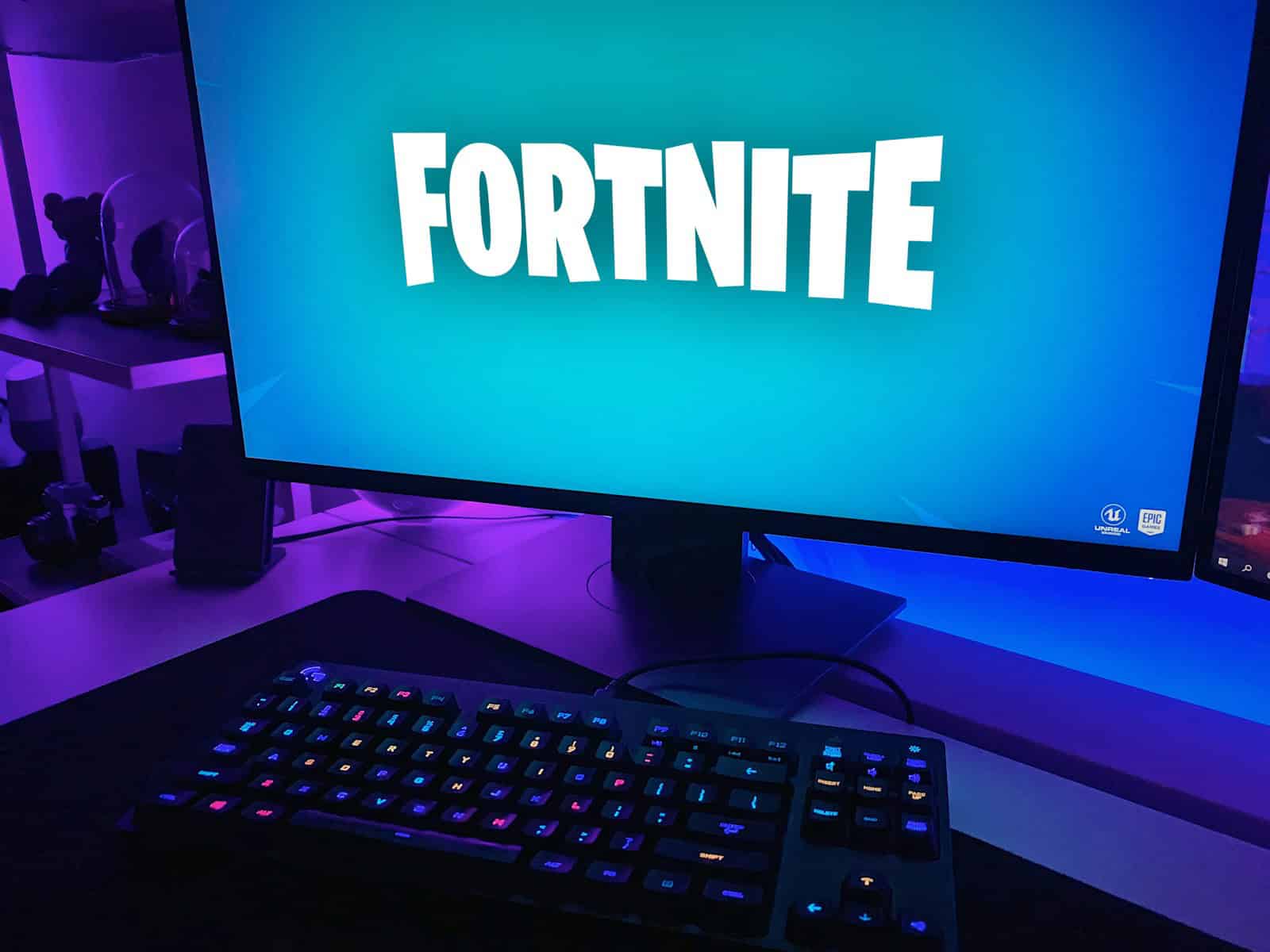Boosting frames per second (FPS) in Fortnite can enhance the game’s smoothness and responsiveness. The first step is to adjust in-game settings to achieve higher FPS. This involves reducing graphical features such as shadow quality and texture resolutions, and selecting performance modes. Making these changes can help Fortnite run more smoothly on your system.
Upgrading hardware, such as the graphics card (GPU), central processing unit (CPU), or random access memory (RAM), can also significantly improve performance. It’s important to research which components are compatible with your existing system and budget in order to find the best upgrade path. Split-second decisions in Fortnite can mean the difference between victory and defeat, so optimizing your graphics settings is important. By fine-tuning your visual settings, you can strike the perfect balance between stunning visuals and buttery-smooth performance, ensuring you’re always ready to take on the competition more enjoyably.

Best Fortnite Graphics Settings
Finding the perfect balance between visual quality and smooth performance is key to enjoying Fortnite to its fullest. While the “best” settings will vary depending on your hardware, these recommendations will help you get started:
Prioritize Performance
- Rendering Mode: Set this to “Performance” to prioritize frame rate over visual fidelity.
- 3D Resolution: Lower this to around 75-85% to reduce the rendering load on your GPU without sacrificing too much visual quality.
- View Distance: Set to “Medium” or “Near” to improve performance, especially in busy areas.
- Shadows: Turn these “Off” to free up resources for other visual elements.
- Anti-Aliasing & Super Resolution: Disable these features to boost frame rates.
- Textures: Lower to “Medium” or “Low” if you experience frame drops.
- Effects, Post Processing, & Reflections: Set these to “Low” to minimize visual complexity.
- VSync & Motion Blur: Turn these “Off” to reduce input lag and improve responsiveness.
Additional Tips
- Update your graphics drivers: Ensure you have the latest drivers installed for optimal performance.
- Close background applications: Minimize other programs running in the background to free up system resources.
- Monitor your FPS: Use in-game performance monitoring tools to track your frame rate and make adjustments accordingly.
- Experiment: Don’t be afraid to experiment with different settings to find the perfect balance for your system and preferences.
Recommended Settings Table
Here’s a quick reference table summarizing the recommended settings for optimal performance:
| Setting | Recommended Value |
|---|---|
| Rendering Mode | Performance |
| 3D Resolution | 75-85% |
| View Distance | Medium or Near |
| Shadows | Off |
| Anti-Aliasing | Off |
| Super Resolution | Off |
| Textures | Medium or Low |
| Effects | Low |
| Post Processing | Low |
| Reflections | Off |
| VSync | Off |
| Motion Blur | Off |
How to Optimize Your System for Fortnite
Fortnite is a fun and popular game, but it can also put a strain on your computer hardware. If you want to improve your in-game performance, you’re in the right place!
In-Game Settings to Adjust
Start by tweaking your in-game settings. Access these from Fortnite’s menu system. Here are some of the most critical options to change:
| Setting | Description | Recommended Value |
|---|---|---|
| Window Mode | How the game displays on your screen | Fullscreen |
| 3D Resolution | Affects in-game image sharpness | 100% (can be lowered for dramatic FPS increase) |
| View Distance | How far you can see | Medium or lower |
| Shadows | Quality of shadows in the environment | Off or low |
| Anti-Aliasing | Smooths the edges of objects | Off or low |
| Textures | Detail level of in-game surfaces | Medium or low |
| Effects | Quality of explosions, smoke, etc. | Low |
| Post-Processing | Visual enhancements like lens flares | Low |
| V-Sync | Synchronizes framerate with monitor refresh rate (can introduce input lag) | Off |
| Motion Blur | Adds blur effects during movement | Off |
Optimize Your System Settings
Sometimes issues extend outside of the game itself. Make sure your graphics drivers are up-to-date. You can usually download updated drivers from the website of your graphics card manufacturer (NVIDIA or AMD).
Close Background Apps
Close any applications running in the background. These programs can use valuable resources that could be better spent running Fortnite.
Power Plans
Check your computer’s power plan. On Windows, access these settings through the Control Panel. Make sure it’s set to “High Performance” for the best gaming experience.
Let me know if you have any other questions.
Key Takeaways
- Setting optimization is key for better FPS in Fortnite.
- Hardware upgrades can significantly improve game performance.
- Clear guidelines help players enhance their gaming setup.
Optimizing Game Settings for Maximum FPS
To achieve maximum frames per second (FPS) in Fortnite, careful adjustments of game settings and system hardware are essential. This section will explore the best methods to optimize these areas for an improved gaming experience.
Graphics and Resolution Settings
Lowering the game’s graphics settings can greatly increase FPS. Specific settings to adjust include:
- Resolution: Set the resolution to 1920×1080 for a balance of clarity and performance.
- 3D Resolution: Reduce this to 75% to lessen the load on the graphics card.
- View Distance: Keep this to ‘Medium’ as increasing this value does not typically improve gameplay but can reduce FPS.
- Shadows, Anti-Aliasing & Effects: Turn these off for the maximum FPS boost.
- Textures: Set to ‘Low’ to free up video memory (VRAM).
- Rendering Mode: Use ‘Performance Mode’ for increased FPS, especially on lower-end systems.
- Motion Blur & Vsync: Disable these to reduce input lag and improve clarity.
- Show FPS: Enable this to monitor your FPS in real time.
With these adjustments, Fortnite will run smoother, helping with faster reaction times in-game.
System and Hardware Enhancements
Optimizing hardware is crucial for the best gaming performance:
- Graphics Card (GPU): Ensure you have a card that meets at least the minimum Fortnite system requirements. For high-end performance, consider newer models that support technologies like Nvidia Reflex for lower latency.
- CPU & Memory (RAM): Your central processing unit (CPU) should be up-to-date with the game’s demands. 8GB of RAM is necessary; 16GB is optimal for multitasking.
- Monitor: Use a monitor with a high refresh rate to view the benefit of higher FPS.
- Drivers: Keep graphics drivers updated to leverage the latest performance optimizations.
- Operating System: Running the latest version of your operating system, such as Windows 10, ensures better game support.
A system upgrade might be required for older PCs that struggle to run Fortnite smoothly.
Network and Software Tweaks
Software and network configurations can affect game performance:
- Epic Games Launcher: Close it while playing if it’s not needed to free up system resources.
- DirectX Version: Use DirectX 11 if DirectX 12 causes stability issues, as it can offer more consistent performance.
- Background Applications: Close unnecessary programs to reduce CPU and RAM usage.
- Ping and Latency: Use a wired internet connection to improve ping and reduce latency.
- Super Resolution & Low Latency Modes: If available, enable features like Nvidia DLSS to improve FPS without sacrificing quality.
By following these tweaks, players can boost their in-game performance.
Hardware Upgrades for Fortnite
Upgrading your PC can greatly enhance your Fortnite experience by providing higher fps and smoother gameplay. This section discusses the primary components you’ll need to upgrade.
Selecting the Right Components
When choosing hardware, look for components that outperform the game’s minimum requirements for a better gaming experience. For graphics, a card like the Nvidia RTX 3070 or the AMD Radeon RX 6700 XT provides a substantial boost over older models like the Nvidia GTX 960 or AMD R9 280. For the processor, compare a Core i3-3225 with a more robust Intel Core i7-8700 or AMD Ryzen 7 3700X to see notable improvements. RAM is also critical; ensure you have at least 8GB, though 16GB is preferable for gaming.
| Component | Minimum Recommended | High-Performance Choice |
|---|---|---|
| GPU | Nvidia GTX 960 or AMD R9 280 | Nvidia RTX 3070 or AMD Radeon RX 6700 XT |
| CPU | Core i3-3225 | Intel Core i7-8700 or AMD Ryzen 7 3700X |
| RAM | 8GB | 16GB or more |
Impact of Upgrades on Game Performance
Higher-end hardware not only boosts fps but also allows for higher resolutions and more detailed graphics settings like global illumination and hardware ray tracing. An improved graphics card can handle Fortnite’s DirectX 12 requirements and technologies such as Nvidia DLSS, making the game look sharp and run smoothly. A more powerful CPU can improve the game’s overall responsiveness and decrease load times.
Compatibility and Installation Considerations
Ensure the selected components are compatible with your existing PC. A new GPU may require a more powerful power supply, and some high-end GPUs need a certain space in the PC case to fit. Always check the motherboard’s CPU socket and RAM slots availability. When upgrading, updating your operating system and graphics drivers is vital to take full advantage of the new hardware. Remember to use a monitor that matches the frame rate limit of your PC to see the actual performance gain.
Remember, a balanced system is optimal. High-end parts won’t reach their full potential if paired with a low-end monitor or if other PC components become bottlenecks. Prioritize a balanced approach for the best return on investment.
Frequently Asked Questions
This section addresses common inquiries about enhancing Fortnite’s Frames per Second (FPS).
What settings should I adjust to maximize Fortnite performance?
Players can improve Fortnite by setting the game to Fullscreen, reducing the view distance, and turning off shadows and motion blur. They should also lower texture and effects quality for better framerate.
Which hardware upgrades are most effective for improving FPS in Fortnite?
Upgrading to a more powerful graphics card (GPU) typically offers the biggest improvement. Additionally, increasing system RAM and switching to a solid-state drive (SSD) can also benefit performance.
How can I optimize my PC’s background processes for better gaming framerate?
Close unnecessary applications and turn off background services that are not in use when playing Fortnite. You can manage these through the Task Manager on Windows.
Are there any specific graphics driver updates that can enhance Fortnite gameplay?
Yes, updating to the latest graphics drivers can lead to better performance as they contain optimizations for the latest games. Check the website of your GPU manufacturer for updates.
What in-game graphical settings are recommended for achieving higher FPS?
Inside Fortnite, set textures to low, turn off anti-aliasing, effects, and post-processing. Using Performance Mode can significantly increase FPS by simplifying graphics.
Can overclocking components lead to a significant FPS increase in Fortnite?
Overclocking your CPU or GPU can increase FPS, but it should be done carefully. It can lead to higher performance at the risk of overheating or system instability. Use reliable software and understand the risks before proceeding.







